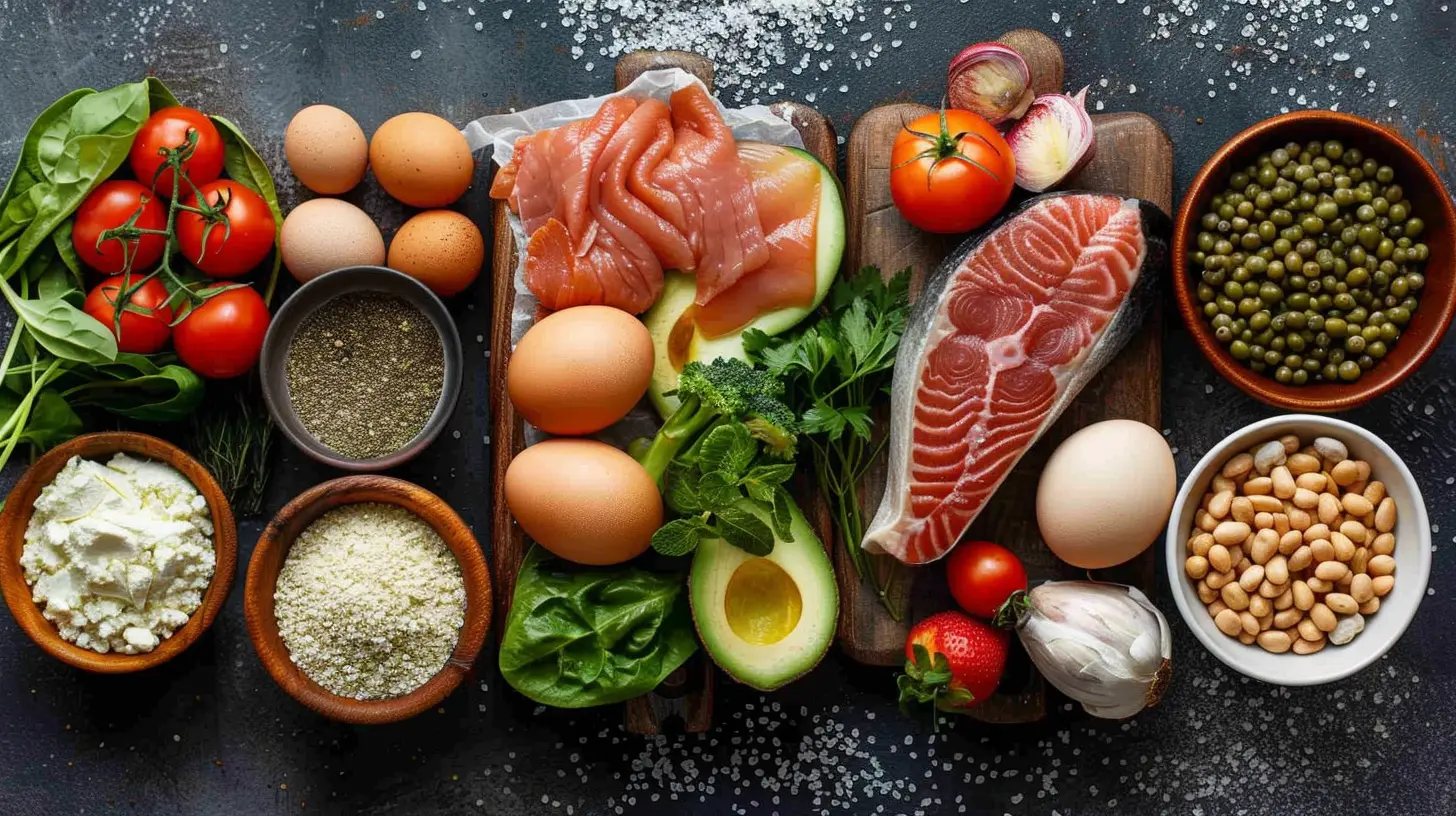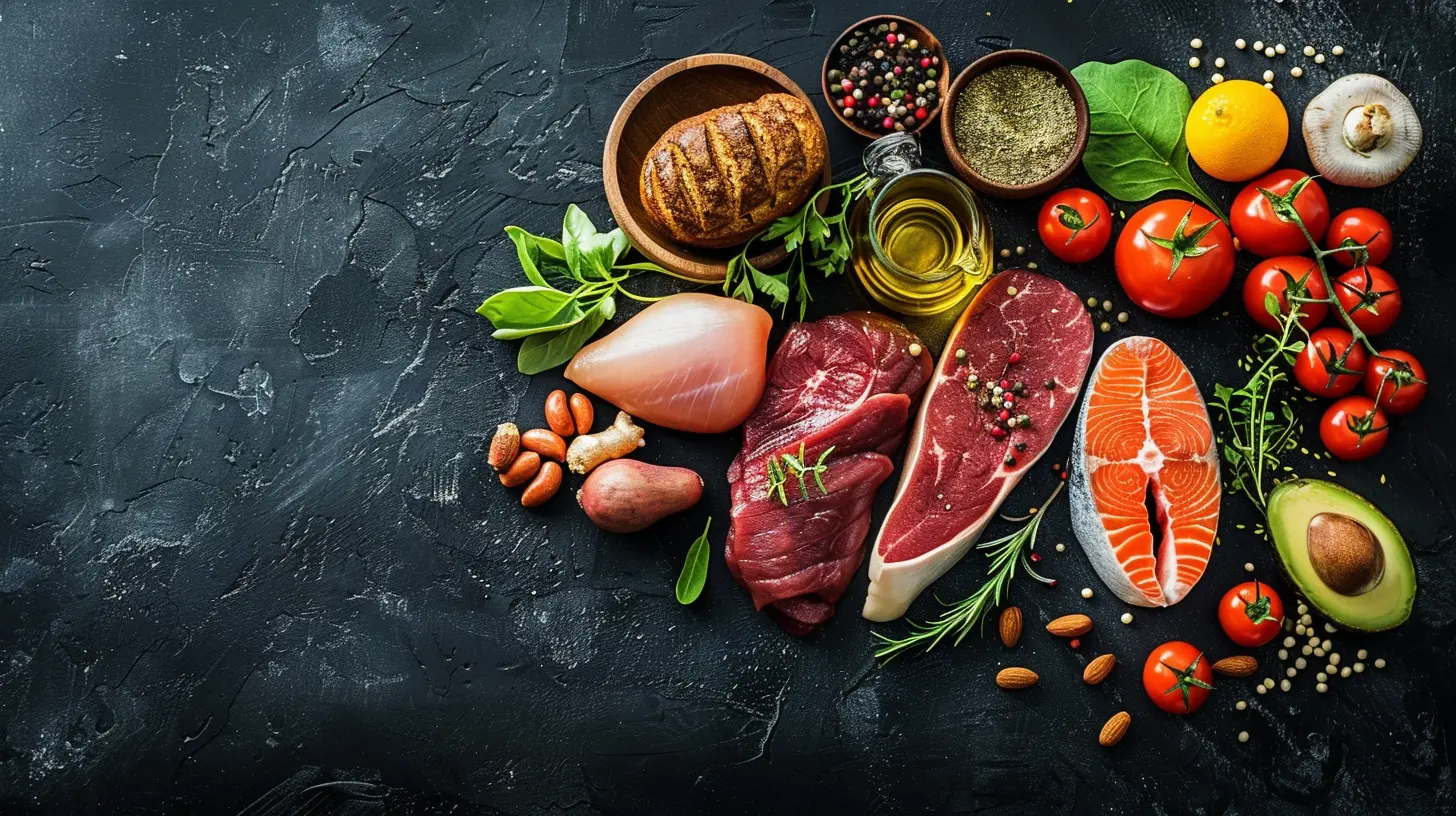Keto and Your Skin: How Low-Carb Diets Affect Appearance
7 July 2025
The keto diet has taken the world by storm, with promises of weight loss, better mental clarity, and improved energy levels. But have you ever wondered how this low-carb lifestyle affects your skin? While some rave about a clearer complexion, others report unexpected breakouts. So, what’s really going on? Let’s dive into how keto impacts your skin, both the good and the not-so-good.

How Keto Works and Why It Could Affect Your Skin
Before we get into the skin side of things, let’s quickly break down what keto is all about. The ketogenic diet is a high-fat, moderate-protein, and low-carb eating plan that pushes your body into ketosis, a metabolic state where it burns fat for energy instead of carbohydrates.Since what you eat plays a massive role in skin health, it's no surprise that switching to keto can bring noticeable changes to your complexion—some welcome, some not so much.

The Skin Benefits of Keto
1. Reduced Inflammation = Fewer Breakouts
One of the biggest perks of a keto diet is its anti-inflammatory effect. Chronic inflammation is often linked to acne, redness, and skin conditions like eczema. Eliminating processed carbs and sugars can help calm inflammation, potentially leading to fewer breakouts and a healthier glow.2. Balanced Blood Sugar = Less Acne
High-carb diets can cause insulin spikes, which in turn boost oil production in your skin. More oil means a higher chance of clogged pores and acne. By cutting back on carbs, keto helps regulate blood sugar levels, reducing the likelihood of breakouts.3. Increased Collagen Production
Healthy fats, like those found in avocados, nuts, and fatty fish, are essential for collagen production. Collagen is the protein that keeps skin firm, smooth, and youthful. The good fats from a keto diet can help maintain skin elasticity and slow down signs of aging.4. Better Hydration from Healthy Fats
Dry skin is a common issue for many people, but the high-fat nature of the keto diet can actually improve hydration. Consuming omega-3-rich foods like salmon and walnuts can keep your skin soft and supple, preventing flakiness and dryness.
The Potential Downsides of Keto for Your Skin
While keto has some amazing skin benefits, it’s not all sunshine and rainbows. Some people experience skin woes when they transition to a low-carb lifestyle.1. Keto Rash – Yes, It’s a Thing
Some keto followers develop an itchy, red rash known as prurigo pigmentosa. While the exact cause isn’t fully understood, it’s believed to be linked to ketosis itself. The good news? It’s usually temporary and can be managed by slightly increasing carb intake.2. The Initial "Keto Breakout"
Ever heard of the dreaded "keto acne"? Some people experience breakouts when they first start keto. This could be due to:- Detox Effects – Cutting out sugar and processed foods might cause your body to purge toxins, leading to temporary breakouts.
- Increased Dairy Intake – Some keto foods, like cheese and heavy cream, can trigger acne in those sensitive to dairy.
- Hormonal Changes – Switching to a high-fat diet can influence hormones, sometimes leading to initial skin imbalances.
3. Dehydration Can Make Skin Look Dull
Carbs help your body retain water, so when you drastically reduce them, you also lose a lot of water weight. If you’re not drinking enough fluids, your skin can look dry and lackluster. Staying well-hydrated is key to maintaining a dewy, fresh complexion on keto.4. Deficiencies That Can Impact Skin Health
Going keto sometimes means unintentionally missing out on essential nutrients that are vital for healthy skin. Some common deficiencies include:- Vitamin C – Found in fruits, which are limited on keto, vitamin C is crucial for collagen production and overall skin health.
- Zinc – Supports skin healing and can reduce acne, but some keto followers may not get enough from their new diet.
- Electrolyte Imbalance – Low sodium, potassium, and magnesium levels can lead to dry skin and a tired appearance.

How to Maintain Healthy Skin While on Keto
1. Prioritize Hydration
Drink plenty of water to compensate for the water loss that happens when you cut carbs. Adding electrolytes to your regimen (like sodium, potassium, and magnesium) can also help keep your skin glowing.2. Eat More Skin-Friendly Fats
Focus on healthy, skin-loving fats like:- Avocados
- Olive oil
- Coconut oil
- Fatty fish (salmon, sardines, mackerel)
- Nuts and seeds
These fats provide essential fatty acids that keep your skin hydrated and plump.
3. Get Enough Micronutrients
Since keto limits fruit intake, make sure you’re getting vitamins and minerals from other sources. Incorporate:- Leafy greens (spinach, kale) for vitamin C and antioxidants
- Nuts and seeds for zinc and magnesium
- Bone broth for collagen and minerals
4. Be Mindful of Dairy Intake
If you notice that your skin is breaking out more after going keto, try reducing dairy consumption. Swap out heavy cream and cheese for dairy-free alternatives like coconut milk or almond milk.5. Slowly Transition into Keto
Jumping into keto too fast can shock your system, leading to skin breakouts and other unwanted side effects. A gradual transition can help your body adapt better while minimizing the negative impact on your skin.So, Is Keto Good or Bad for Your Skin?
It really depends on the person. Some people see glowing, acne-free skin, while others struggle with dryness or breakouts. The key is to listen to your body and ensure you're getting the right nutrients to support healthy skin.The bottom line? Keto can work wonders for your skin if done correctly. Focus on hydration, incorporate nutrient-dense foods, and monitor how your skin responds. If you start noticing negative effects, tweak your diet accordingly, and you’ll be glowing in no time!
all images in this post were generated using AI tools
Category:
Keto DietAuthor:

Arthur McKeever
Discussion
rate this article
2 comments
Viva McGehee
Embrace the power of a low-carb diet! You might discover not just weight loss, but radiant skin too. Small changes can lead to brighter, healthier living. Shine on! ✨
December 1, 2025 at 5:52 PM
Bianca McVaney
The keto diet may improve skin clarity for some by reducing inflammation and insulin spikes. However, individual reactions vary—monitor your skin's response and adjust your diet accordingly.
July 13, 2025 at 3:16 PM

Arthur McKeever
Thank you for your insight! It's important for everyone to pay attention to their unique responses on a keto diet.


